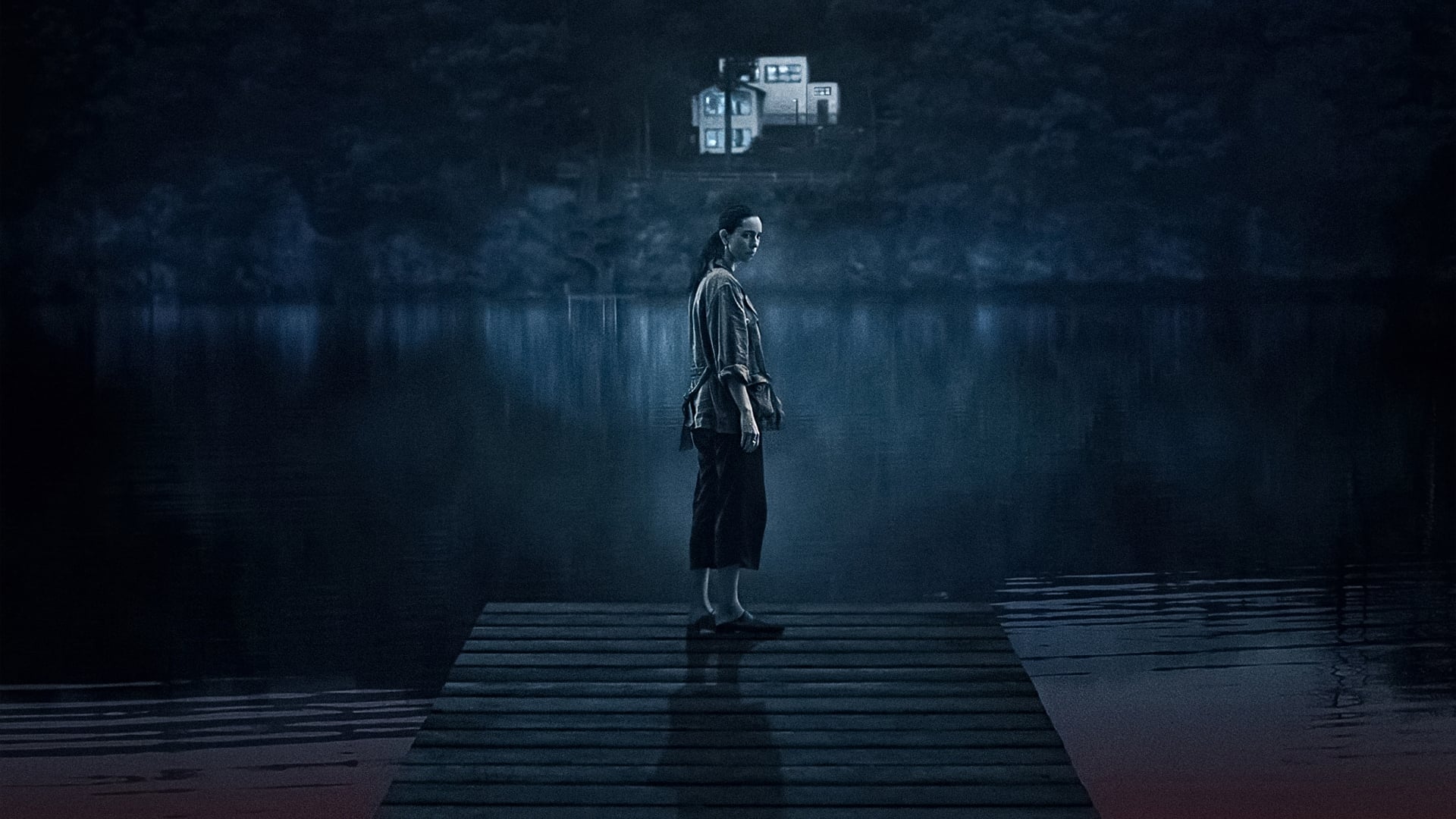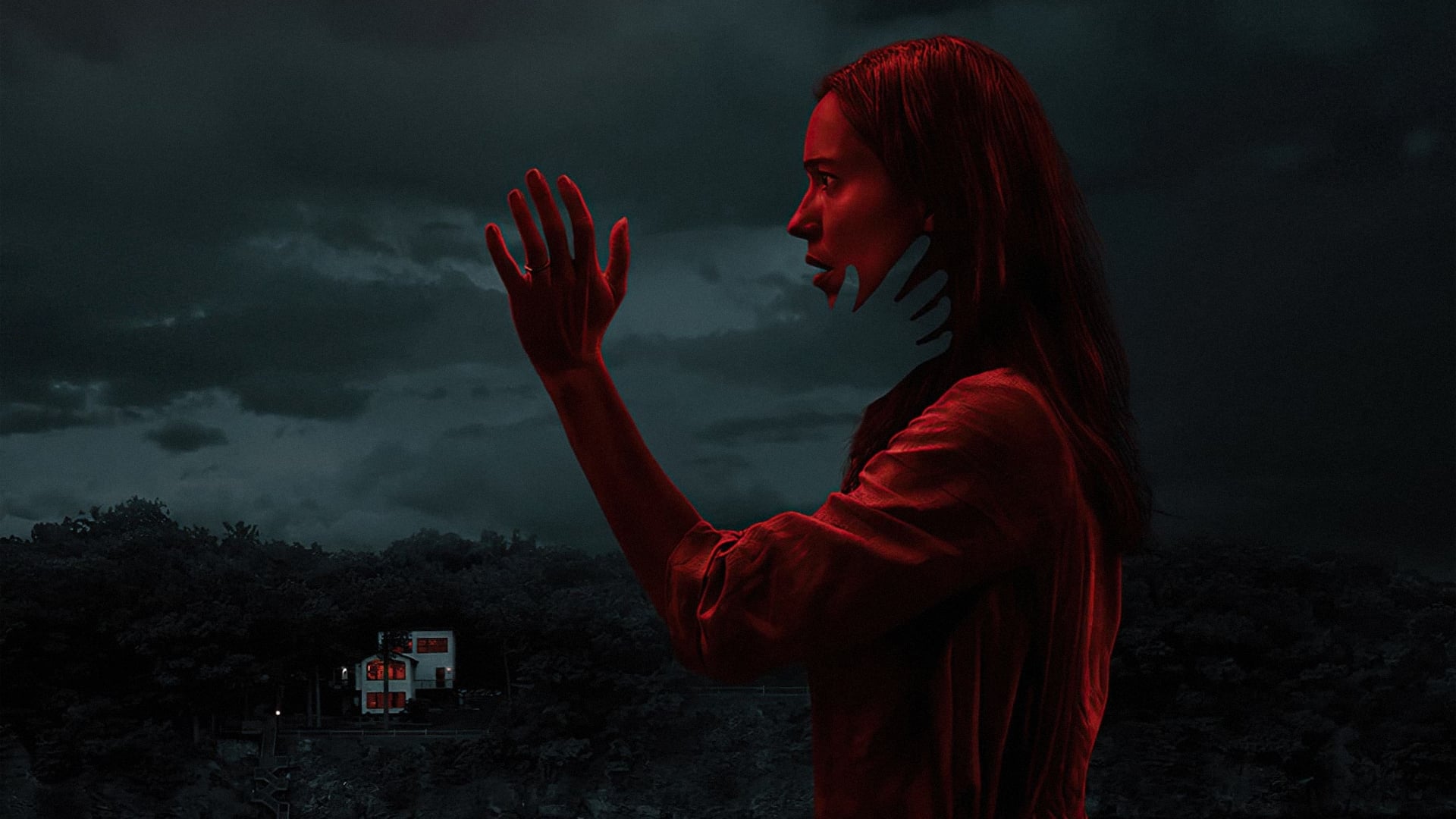
Primal Scream: Depression, Suicide, and The Night House
The following contains spoilers for the plot of The Night House
There are two parallel stories unfurling in David Bruckner’s The Night House. The first is somewhat standard horror fare, involving a haunted house fueled by a supernatural being that protagonist Beth (Rebecca Hall) brought back with her from a near death experience. The second, deeper layer paints a deep red portrait of what it’s like to live alongside the twin demons of depression and suicidality.

Depression and suicidal ideation can have many triggers, as well as none. Beth’s depression was likely the result of a traumatic car accident and ensuing near death experience at 17 years old. This incident left her with the knowledge that there’s no light at the end of the tunnel, “there’s just tunnel.” Ever since then she’s “struggled with that stuff..depression, dark stuff.” But the film, which is bookended by suicide, begins with the aftermath of her husband Owen’s (Evan Jonigkeit) sudden and unexpected death by his own hand. Even though their lake house is covered in photos of the happy couple, depression has still haunted Beth in spite of the good times, as it often does.
After Owen’s death, depression begins to come knocking (literally) for Beth at night. From the very beginning, the audience can see a fleeting silhouette following Beth that is worked into the architecture of the home. On the surface this is the demon (the film gives it no other identity and this is the most appropriate name I can think of) that followed Beth back from her NDE. The central metaphor of The Night House positions depression as the demon, a notion similar to Andrew Solomon’s 2001 magnum opus on the topic, “The Noonday Demon: An Atlas of Depression.”
As Beth tries to regain some sense of normalcy after her husband’s suicide, depression won’t allow her to move forward. Bloody footprints, gunshots, and internet searches for guns threaten to drag her back into its shadow. When Beth, a teacher, becomes brutally honest about her husband’s actions with a student’s mother, she is greeted with the requisite blank look and hollow “Sorry for your loss” that suicide often evokes. However, Beth does have connections to two friends who do their best to meet her with compassion and authenticity: fellow teacher Claire (Sarah Goldberg) and neighbor Mel (Vondie Curtis-Hall).

One night Beth begins to text with what she thinks is Owen’s ghost, but is actually the demon trying to seduce her into ending her struggle with depression via suicide; “Come down,” it urges her, “don’t be afraid.” Depression does its best to make suicide seem like the best direction to go, even if it needs to lie to you in the process. Even the song the demon repeatedly turns on at night to wake Beth, Calvary Cross by Richard Thompson, carries in its lyrics themes of depression & suicide:
I was under the Calvary Cross/
The pale-faced lady she said to me/
I've watched you with my one green eye/
And I'll hurt you 'till you need me/
You scuff your heels and you spit on your shoes/
You do nothing with reason/
One day you catch a train/
Never leaves the station/
Everything you do/
Everything you do/
You do for me/
Now you can make believe on your tin whistle/
And you can be my broom-boy/
Scrub me 'till I shine in the dark/
I'll be your light 'till doomsday/
Oh it's a black cat cross your path/
And why don't you follow/
My claw's in you and my lights in you/
This is your first day of sorrow/
Everything you do/
Everything you do/
You do for me/
Unbeknownst to her, Owen was trying to keep this demon from hurting Beth. “Trick it, don’t listen to it” he wrote in a journal, echoing the direction often given by mental health professionals trying to help those in deep depression. Owen’s effort eventually led him to attempt the use of sympathetic magic to trick the demon away from harming Beth. He even tried murdering women who closely resembled Beth to keep the demon at bay. Unfortunately this stopped working, resulting in Owen’s suicide.
During another haunted night, Beth sees the spirits of these women run past her and jump off the lakeside cliff in front of her home. While she thankfully doesn’t follow suit, the demon (tricking her into thinking it's Owen’s ghost) takes her on a boat to a mirror version of her home across the lake. The distorted thrall of death is given the color red in the film, which fills Beth’s journey to the opposite side of the lake. The demon resides here, in a land that is both familiar and twisted, much like life with depression.

Despite Claire & Mel’s attempts to connect with Beth, she is dogged in her pursuit of her personal demon. In the real world she discovers the mirrored house Owen built in his attempts at confusing the demon. She also meets a woman, Madelyne, who Owen almost killed in this house. Madelyn shares that she had a dream about Beth where something all around her was chasing her, much like her depression does. Eventually, Beth discovers the corpses of her dopplegangers Owen hid under the reverse home, perhaps symbolizing how depression can destroy the different versions of you that exist within yourself.
Eventually the demon reveals its true nature and origin to Beth while hurling her through its version of the mirrored home. It came from the nothing she saw during her near death experience, the nothing of existential dread that fuels depression and suicidality. The demon tried to get Owen, the closest person to Beth, to kill her much like how depression gets the thing that’s closest to you—your brain—to kill itself. As the demon takes Beth out onto the lake in the boat and covers her in red light, it makes its final attempt to trick her into suicide. But Claire and Mel come looking for her to show that authentic connection with other people is the best shot anyone has at walking away from the distorted mirror world of depression. Beth hears Claire calling for her as the demon says, “There is nothing. There is only me. Come back to me. It doesn’t matter. Let go.” As truthful and comforting as this message can seem to someone so used to being in the depth of depression, Beth is able to turn away from it and toward her friends as they come to rescue her.
Claire takes her off the boat, and they swim back to Mel on the dock. Claire lets Beth know, “I got you” and Mel echoes with, “You’re safe now.” While her friends cradle her, Beth looks back out to the boat and sees the dark silhouette of suicide once more. Mel says, “There’s nothing there,” to which Beth responds, “I know.” Even though the spectre of depression and suicide will likely continue to follow Beth in this way, meaningful connections with those who care about her will ultimately be what she is able to turn to instead.

